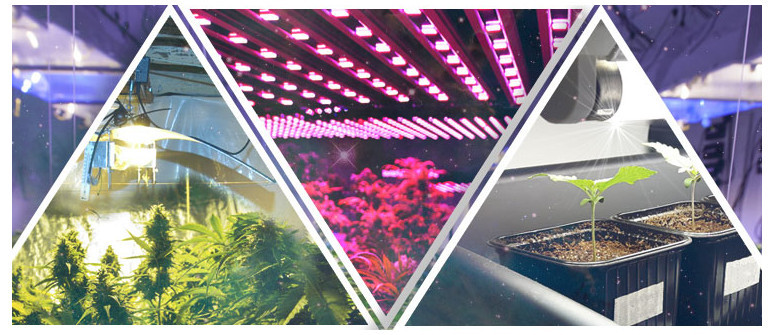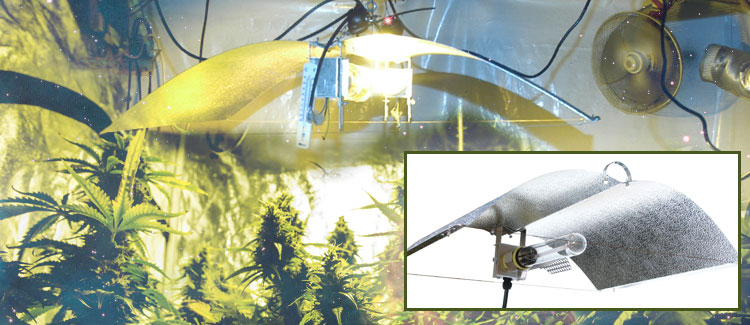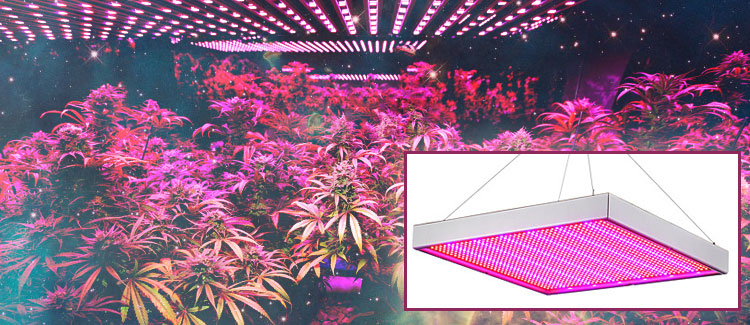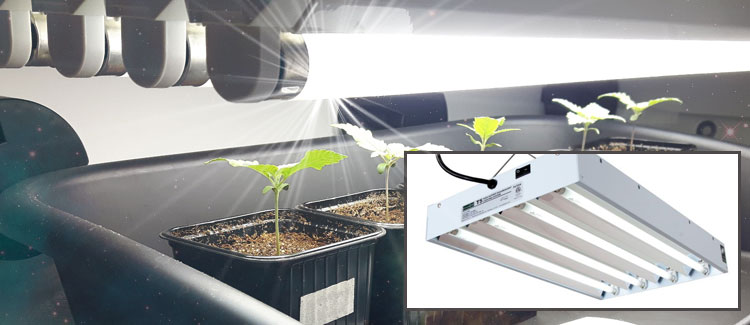Different kinds of light used for growing

There are a number of different types of lighting systems used for growing cannabis indoors. They vary in function, type of light emitted, power usage, and cost.
There are a number of different types of lighting systems used for growing cannabis indoors. They vary in function, type of light emitted, power usage, and cost. Knowing what they are and how they perform will help you make an informed decision on how to get the yummiest nuggets in the jar.
HID lights

HID or high intensity discharge lights have been the mainstay of indoor horticulture for many decades. They really took off in the marijuana industry during the ‘80s. They have been responsible for producing world class cannabis up to this very day. The technologies have become more refined, but the basic principles remain the same.
An electrical arc is created between two cathodes that are suspended within a tube filled with reactive chemicals. The chemicals vaporize when heated, giving off sunlight-type spectrums of light suitable for growing all kinds of edible plants and, most importantly, cannabis.
There are a number of HID lamp types, but those most often used for marijuana are high pressure sodium (HPS) and metal halide (MH). Both HPS and MH lights need ballasts to function correctly, as well as reflectors to increase light efficiency and a timer.
HPS
High pressure sodium lamps are very power-efficient devices. They produce approximately 100 lumens per watt (up to 150 lumens per watt) for 600W globes. They release a broad spectrum of light that tends towards the red end. Most light is produced in the green, yellow, orange, and early red spectrums.The light output is noticeably yellow-orange.
HPS lamps contain mercury and an amalgam of metallic sodium. The high chemical reactivity inside the lamps means the globes are specially constructed from aluminium oxide.
HPS lights can be used for the complete growing cycle of cannabis from seedling to maturity but caution need to be taken in power output depending on the size of the plants. Too strong light like a 1000W in a small tent can overpower little seedlings, causing more trouble than benefits.
However, the savvy grower will use HPS during the flowering phase since the red-biased spectrum imitates autumn light well. It is during autumn that cannabis flowers in nature. Imitating the red-shifted light of the lower and weaker sun produces better flowers than other types of light.
MH
Metal halide lamps function similarly to HPS, but contain mercury and metal halides (sodium iodide and bromine). They are also very efficient, producing 75–100 lumens per watt, with an additional 30% if using an electrical ballast.
Most of the light is produced in the green, yellow, and orange spectrums. However, the MH light spectrum has higher blue and violet outputs, producing a noticeably iridescent white/pale blue light.
MH lights can be used for the entire grow cycle, but those in the know will use them for the vegetation phase, swapping over to HPS when flowering is initiated.
The higher blue and violet output imitates the summer light at peak season, which is when cannabis vegetates naturally and receives lots of UVA and UVB light. These spectrums encourage robust vegetative growth of young plants.
LED

An LED is a p-n junction diode two-lead semiconductor light source. Say that 10 times fast. Or even once. No need to go into too much detail, but essentially, when a suitable charge is passed across the conductor junction, photons are released, which create light. The semiconductor arrangement is contained inside a lens, which directs and focuses the light.[1]
The lenses can be tinted to provide various spectrums, including UV and infrared. They are unidirectional and do not require reflectors to redirect light radiated away from the bulbs like HID lights. LED setups require a driver, which is similar to a ballast constructed specifically for LEDs.
LED lights can be used for the complete cannabis grow cycle. They have a reputation for being expensive, but they are incredibly power-efficient and soon make up for their cost. They also have the advantage of running substantially cooler than HID lights.
The globes come in an array of wattages and spectrums. Blue/white globes are used predominantly for vegetation, with some red included. When flowering is induced, globes are swapped out for predominantly red varieties with some blue/white.
FLUORESCENTS

Fluorescent lights come in a number of configurations. Long and short tubes, curved tubes, or CFLs (compact fluorescent lights). Fluorescents pass a charge through mercury vapor, which then ionises to produce light. The light is then modified with chemical coatings inside the glass tube.
The coatings for grow lights vary to produce white light for vegetation or purple light for flowering. Fluorescents only produce one sixth of the light of other types of lamps, but still get good results in the cannabis grow room.
The lower output means slower growth, but growth nonetheless. Similarly, respectable buds can be produced by fluorescents, but they lack the density produced by their more powerful cousins. Their price makes them ideal for the entry level grower who is just learning. They are easy to set up, produce very little heat, and do not require an external ballast.
Fluorescents are used during the infant and early seedling stage, or for rooting clones prior to HID exposure. The broad light spectrum still encourages growth, but there is little heat stress for the immature plants.
.jpg)
.jpg)

.jpg)
